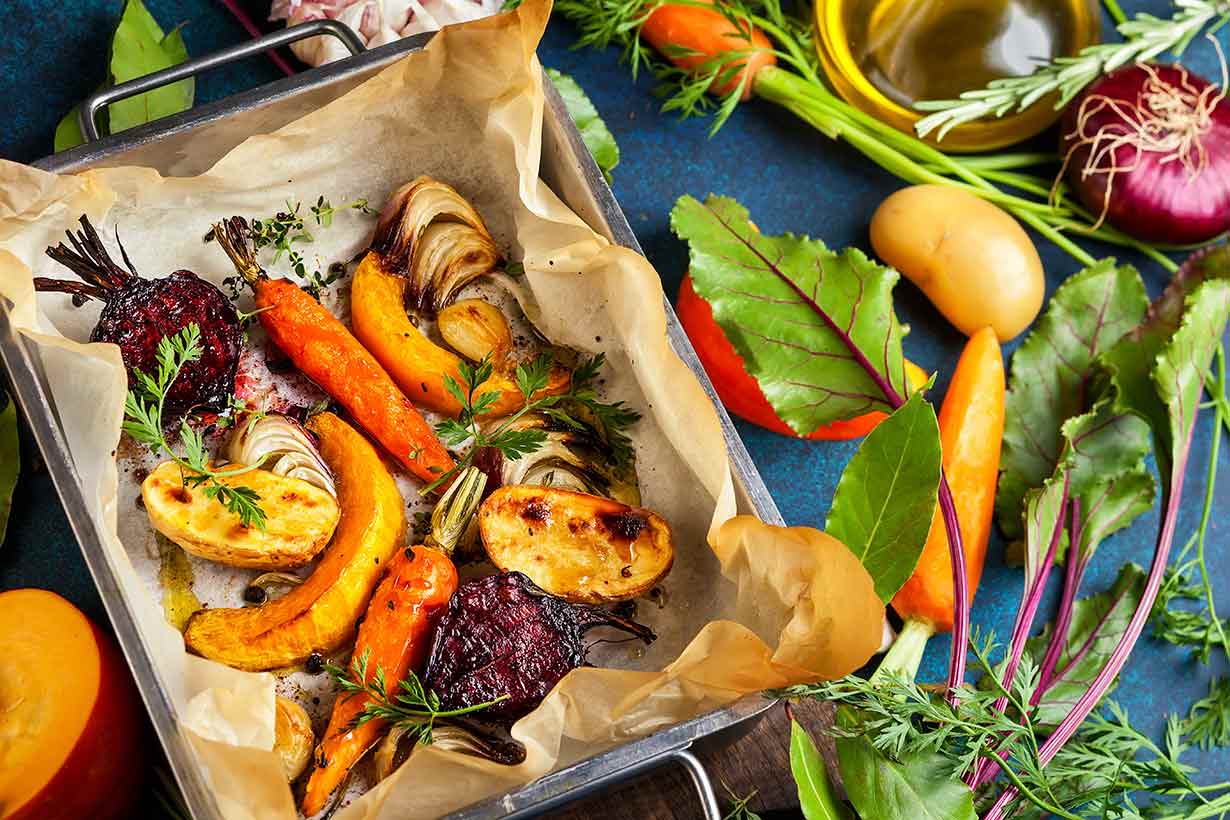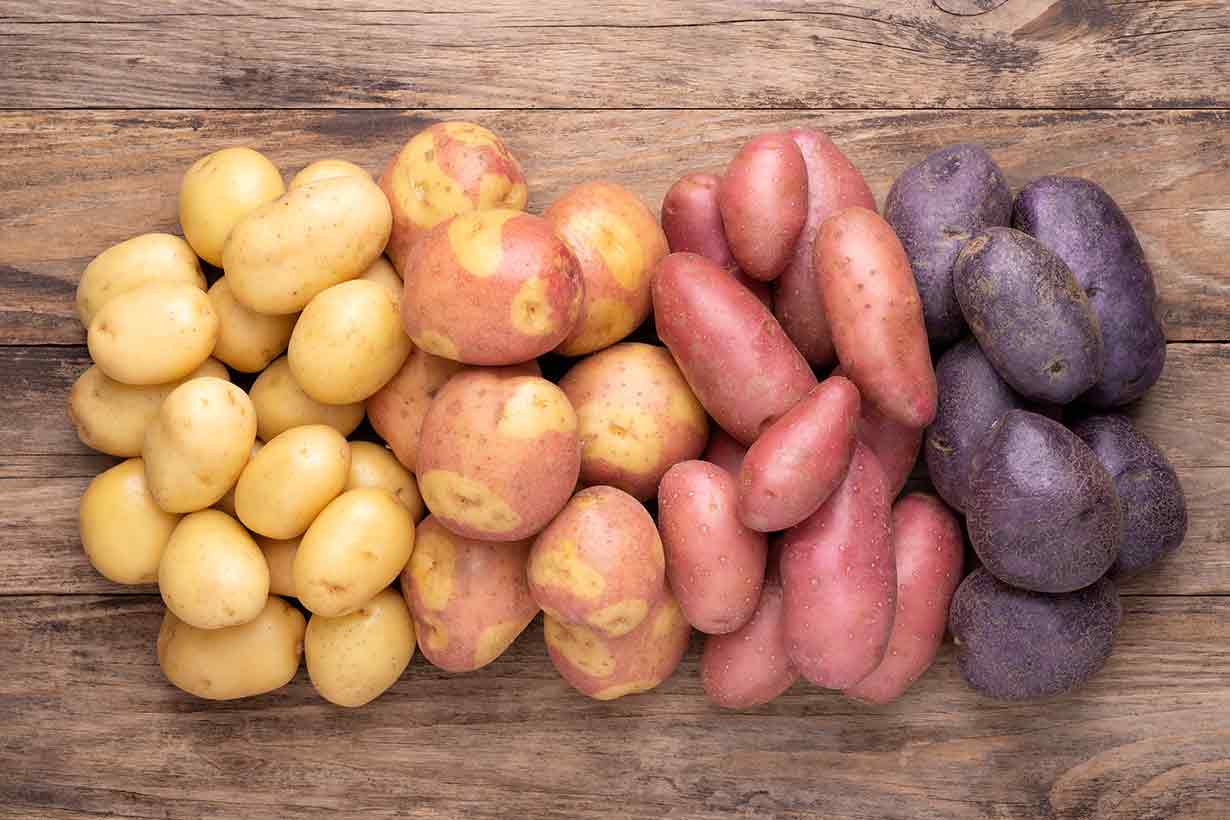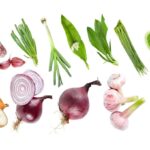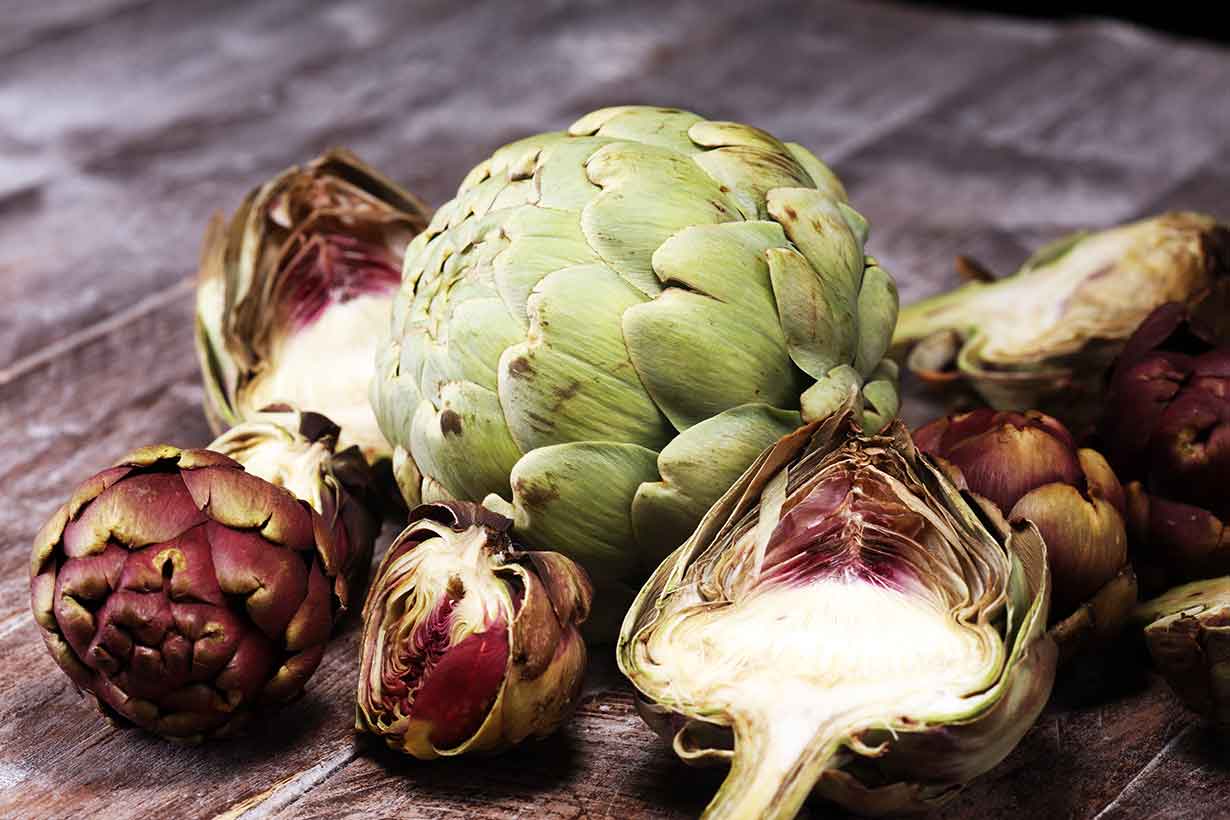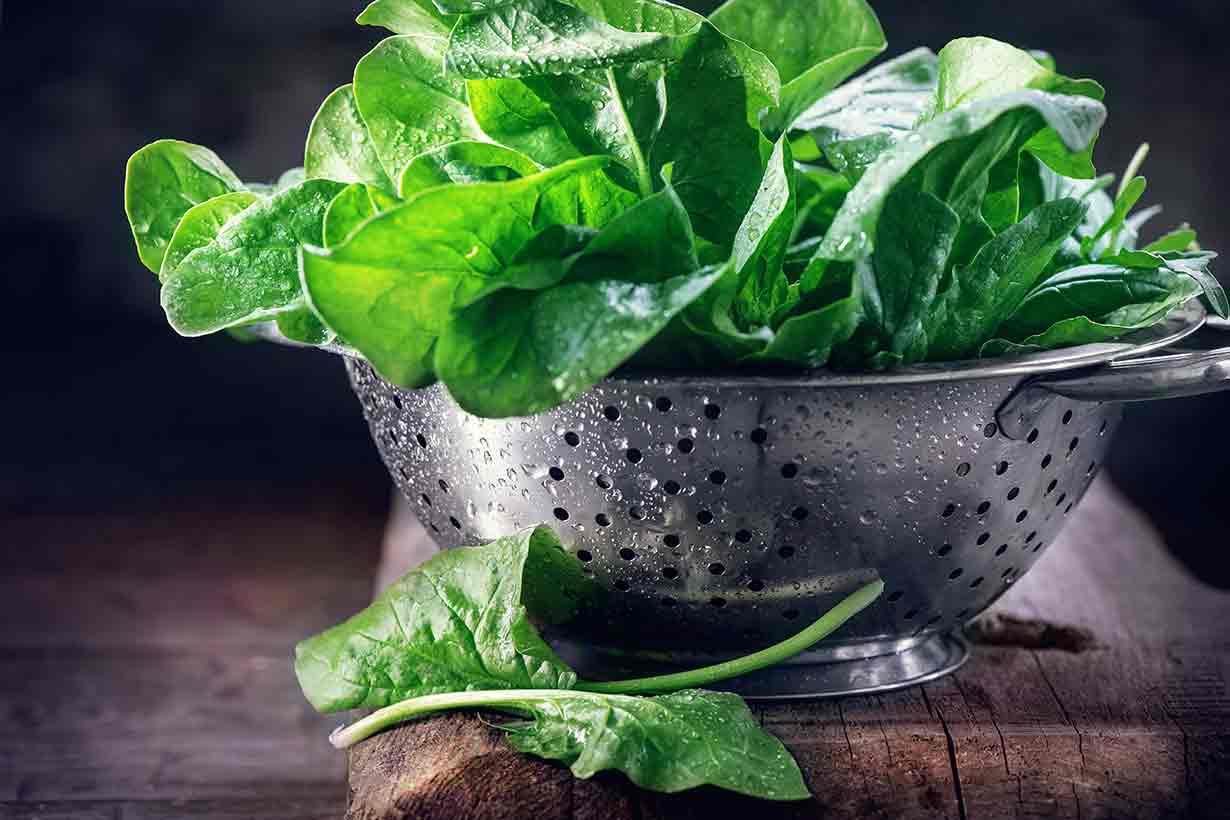Daikon radish is a versatile type of radish that is native to East Asia.
It features heavily in cuisines across Asia, and it is available to buy around the world.
This article will explore the benefits of daikon radish and delve into its complete nutritional profile.
But first, let’s explore what daikon radish is in a bit more detail.
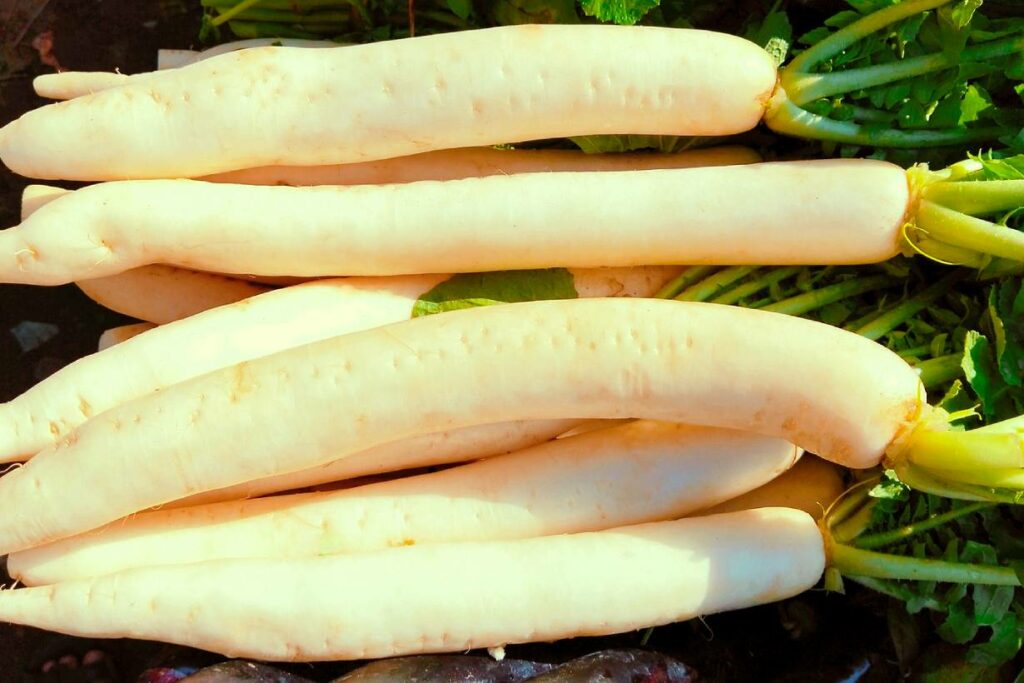
What Is Daikon Radish?
Daikon radish (Raphanus sativus) is a root vegetable that provides a broad range of vitamins and minerals, along with several potentially beneficial compounds.
The image above portrays the appearance of daikon radish, characterized by its long white body, somewhat reminiscent of a lengthy, white carrot.
Native to East Asia, daikon radish is particularly prevalent in Japanese cuisine.
Besides its common name of ‘daikon radish,’ the vegetable may also be known by the monikers:
- Asian radish
- Daikon
- Japanese radish
- Mooli
- White radish (a generic term encompassing several varieties of white radish)
Daikon radish is full of water, with a water content of 93% once cooked (1).
It’s a vegetable with a crunchy and refreshing taste, and it features in a diverse range of Asian recipes.
Benefits
Now, let’s delve into some of the benefits of daikon radish.
1) Daikon Radish is Hydrating
Cooked daikon radish boasts a water content of 93 grams per 100 grams, making it one of the most hydrating vegetables.
This high water content has a number of potential benefits:
- Low calorie provision: Since daikon radish is mainly water, it only provides a small number of calories.
- Hydrating: A 155-gram cup serving of daikon radish provides 144 ml of water, thus playing a role in overall hydration (1).
- High volume: Due to its high water content, daikon radish has a relatively high volume. Foods with a high volume may promote satiety and help us to feel, thus contributing to a reduced calorie intake (2, 3, 4).
2) Contains Glucosinolates That Are Linked To Health Benefits
Glucosinolates are sulfur-containing compounds found in various vegetables.
These vegetables include several cruciferous vegetables, such as bok choy, brocolli, cabbage, and kale (5). Daikon radish also contains glucosinolates (6).
Notably, upon consumption, glucosinolates convert into several breakdown products like isothiocyanates. Isothiocyanates have a pungent (or bitter) taste and smell, possibly to deter pests as a plant defense mechanism (7, 8).
Isothiocyanates are a variety of phytochemical with a large body of research documenting their potential health benefits.
Within this body of research, a 2022 umbrella review comprising 57 systematic reviews and meta-analyses examined the association between isothiocyanate intake and multiple health outcomes. Among its findings, consumption of isothiocyanate-containing cruciferous vegetables was linked to a lower risk of all-cause mortality, as well as cancer mortality and depression (9).
Research has demonstrated that isothiocyanates may have chemopreventive effects. In other words, they may potentially help to lower the risk of cancer (10).
In a 2019 study investigating the mean isothiocyanate content across various vegetables, daikon radish ranked fourth highest, boasting a mean isothiocyanate content of 57.6 μmol/100 g wet weight. This placement followed arugula, watercress, and mustard greens (11).
3) Low In Calories, Yet a Good Source of Nutrients
As previously mentioned in this article, daikon radish boasts a low calorie count as it is mainly composed of water.
Despite this, the radish offers a reasonably good range of essential nutrients in the way of vitamins and minerals.
For instance, a 155-gram cup serving of cooked daikon radish contains only 59 calories while delivering at least 5% of the recommended daily value for the following nutrients (1, 12):
- Potassium
- Copper
- Vitamin C
- Vitamin B6
- Folate
4) Some Varieties of Daikon Radish Contain Anthocyanins
This potential benefit of daikon radish applies to specific varieties of the vegetable.
Some varieties of daikon radish have purple flesh, and this purple hue comes from their high anthocyanin content (13).
Anthocyanins belong to the polyphenol class of phytochemicals (plant chemicals) and are thought to have beneficial effects on human health. They contribute a blue, red, or purple pigment to foods, and they can be found in foods like berries, grapes, and plums.
On this note, a 2019 systematic review and meta-analysis of observational studies demonstrated that anthocyanin intake was associated with a reduced risk of coronary heart disease (9% reduced risk) and cardiovascular disease mortality (8% reduced risk) (14).
However, the authors noted that large randomized controlled trials are necessary to provide further support to these findings.
5) Daikon Radish Can Be Fermented
In addition to its use in a variety of cooked dishes, daikon radish can undergo fermentation.
Numerous fermented daikon radish dishes form a part of the diet in East Asian countries, and these include:
- Tsukemono: A fermented Japanese dish featuring daikon radish mixed with salt and rice bran, either alone or alongside other vegetables like cucumber and turnips (15).
- Kimchi: Various varieties of kimchi, a traditional Korean dish, incorporate daikon radish among their ingredients (16).
Fermented foods such as tsukemono and kimchi offer probiotics, which are believed to benefit the gut microbiome and overall health. The 'microbiome' refers to the community of 'beneficial bacteria' residing in the stomach and intestines (17, 18, 19, 20).
The Nutritional Profile of Daikon Radish
The following tables present the complete nutritional values of cooked daikon radish per 155-gram cup serving.
The nutritional data is sourced from the USDA's FoodData Central database.
Daily values (% DV) have been determined using this USDA data along with the FDA's recommended daily values (1, 12).
Nutrition Facts
| Name | Amount | % Daily Value |
|---|---|---|
| Calories | 59 kcal | |
| Carbohydrates | 5.12 g | 1.9% |
| Fiber | 2.32 g | 8.3% |
| Sugars | 2.81 g | |
| Fat | 4.09 g | 5.2% |
| Saturated | 1.09 g | 5.5% |
| Monounsaturated | 1.38 g | |
| Polyunsaturated | 1.25 g | |
| Omega-3 | 0.18 g | |
| Omega-6 | 1.06 g | |
| Protein | 1.04 g | 2.1% |
| Cholesterol | 0 mg | 0% |
Vitamins
| Vitamin | Amount | % Daily Value |
|---|---|---|
| Choline | 10.1 mg | 1.8% |
| Folate, DFE | 32.6 mcg | 8.2% |
| Vitamin A, RAE | 17 mcg | 1.9% |
| Vitamin B1 (thiamin) | 0.017 mg | 1.4% |
| Vitamin B2 (riboflavin) | 0.056 mg | 4.3% |
| Vitamin B3 (niacin) | 0.363 mg | 2.3% |
| Vitamin B5 (pantothenic acid) | - | - |
| Vitamin B6 | 0.121 mg | 7.1% |
| Vitamin B12 | 0 mcg | 0% |
| Vitamin C | 18.9 mg | 21% |
| Vitamin D | 0 mcg | 0% |
| Vitamin E | 0.527 mg | 3.5% |
| Vitamin K | 5.42 mcg | 4.5% |
Minerals
| Mineral | Amount | % Daily Value |
|---|---|---|
| Calcium | 38.8 mg | 1.7% |
| Copper | 0.074 mg | 8.2% |
| Iron | 0.512 mg | 2.8% |
| Magnesium | 15.5 mg | 3.7% |
| Manganese | - | - |
| Phosphorus | 31 mg | 2.5% |
| Potassium | 350 mg | 7.4% |
| Selenium | 0.93 mcg | 1.7% |
| Sodium | 246 mg | 10.7% |
| Zinc | 0.419 mg | 3.8% |
Note: daikon radish is naturally low in sodium, thus it is likely the USDA's data for 'cooked daikon radish' used salt in the cooking process.
What Does Daikon Radish Taste Like?
Now that we've explored the nutritional properties of daikon radish, let's learn about its taste profile.
First, it is crispy and crunchy as you bite into it, giving way to a softer texture as the radish releases its water content.
In this aspect, it shares similarities with water chestnuts, showcasing a similar crunchy texture. However, the longer the cooking time the softer daikon radish will become.
Daikon radish has a very mild taste, with subtle hints of sweetness. Furthermore, it lacks the robust peppery notes of red radishes.
Typically, daikon radish is usually pickled or used in cooked dishes, where it is seasoned with ingredients like soy sauce and garlic.
In this context, daikon radish is good at absorbing flavors, allowing these seasonings to significantly influence the way it tastes.
What is the Difference Between Daikon Radish and White Radish?
Some people wonder about the differences between daikon radish and white radish.
To briefly clarify, daikon radish is a white radish, but not all white radishes are of the daikon variety.
In this context, the term 'white radish' refers to a wide variety of different radishes with white flesh.
Daikon radish is just one of these varieties, while others may exhibit slightly different nutritional properties and flavor profiles.
Aside from daikon radish, some other popular white radish varieties include Korean radish and white icicle radish.
How To Prepare (and Cook) Daikon Radish
Preparing daikon radish is straightforward process that involves the following steps:
- Washing: Begin by washing the radish under cold water to clean it of any dirt.
- Peeling: Next, peel the daikon with a standard vegetable peeler to remove the skin.
- Cutting: After this, cut the radish into pieces. Some prefer to cut it into cube-shaped pieces, while others may prefer longer stick-like shapes. Once cut, the radish can be consumed raw, pickled, or cooked.
- Cooking: For those cooking daikon radish, most people either boil or stir-fry it. When boiling the radish, it only needs around 10 minutes to develop a softer texture. It can also be added to soups and stews for this 10-minute cooking time. When stir-frying the vegetable, its satisfying crunchy texture adds to the enjoyment of the finished dish. Adding daikon radish toward the end of stir-frying is recommended in this regard, with three to four minutes in the pan being sufficient to cook it while retaining its crunch.
Other Ways To Use Daikon Radish
Here are some other ways to enjoy consuming daikon radish:
- Pickling: Pickled daikon radish is a popular way to prepare the vegetable. This requires making a brine solution with salt, vinegar, and any herbs or spices of choice. Add the daikon radish to a clear glass jar, cover with the brine, and leave it for a few days to develop its flavor before consuming.
- Salads: Incorporate raw (or pickled) cubes of daikon radish into a salad for a refreshing and satisfying crunch.
- Kimchi: Daikon radish is a key ingredient for kimchi. The finished product is flavorful due to the addition of ingredients like garlic, ginger, red pepper powder, and salt. For those interested, there are numerous 'radish kimchi' recipes available online.
Where To Buy
Despite not being a staple vegetable outside of Asia, daikon radish shouldn't be too difficult to find.
It may be available in any of these places:
- Larger supermarkets/grocery stores may stock daikon radish.
- Farmers markets, especially in areas with established East Asian communities, may offer the vegetable.
- Asian grocery stores typically carry daikon radish.
Final Thoughts
Daikon radish offers a pleasant taste and a satisfying crunchy texture, and we can use it in a versatile range of ways.
While it isn't the most nutrient-rich vegetable, it provides a respectable amount of essential nutrients like vitamin C, vitamin B6, copper, folate, and potassium.
Moreover, daikon radish may offer health benefits due to its high level of isothiocyanates.
All in all, daikon radish is a versatile vegetable worth incorporating in the diet from time to time.

